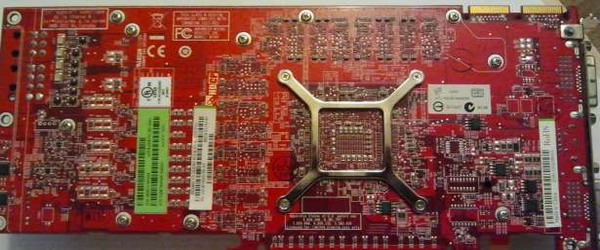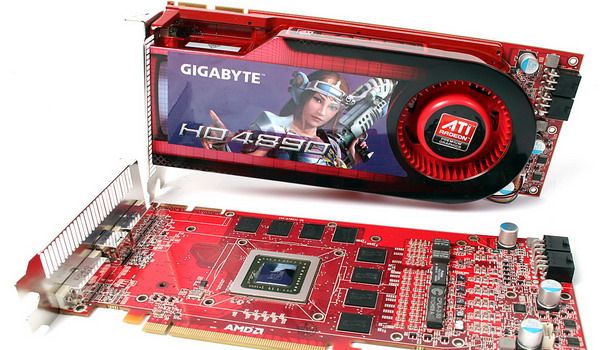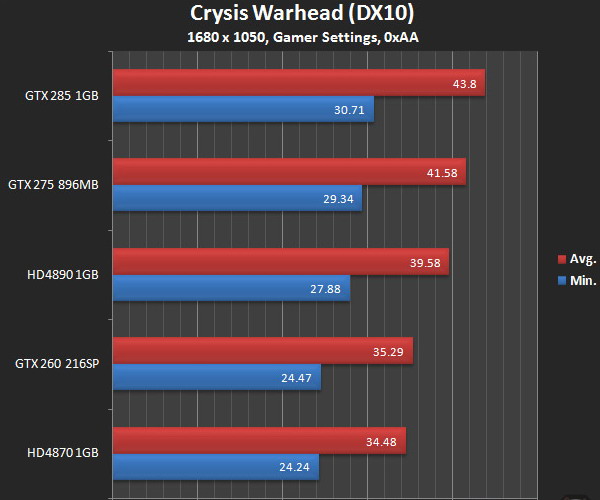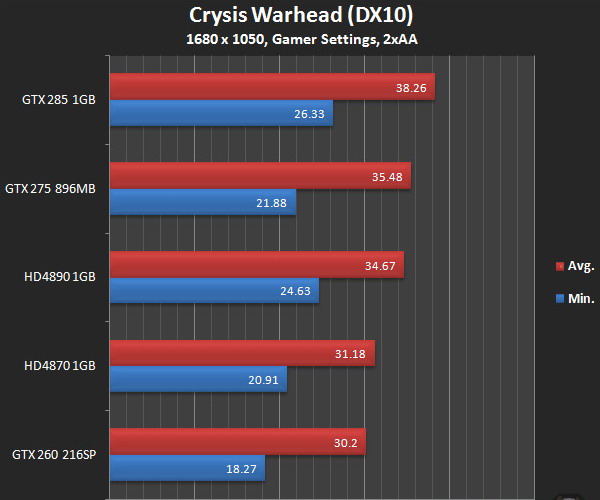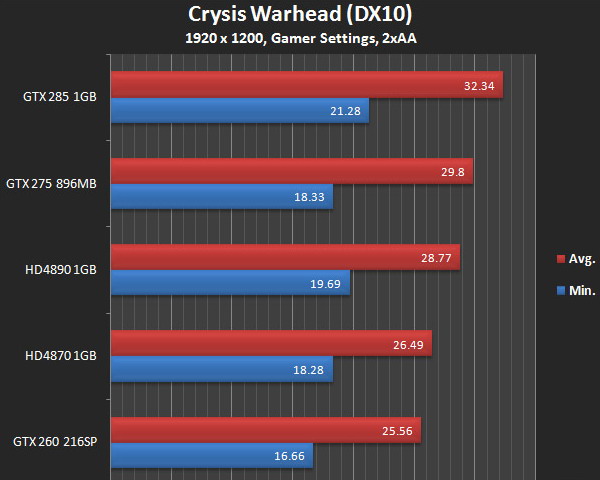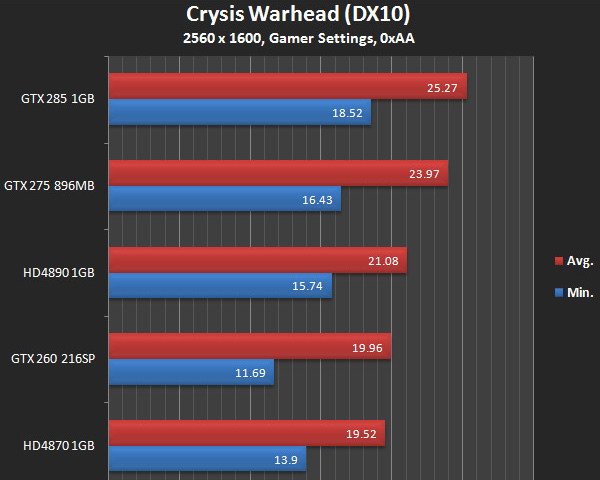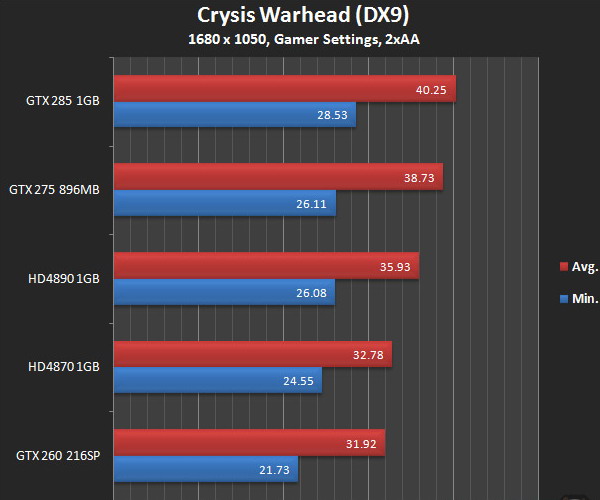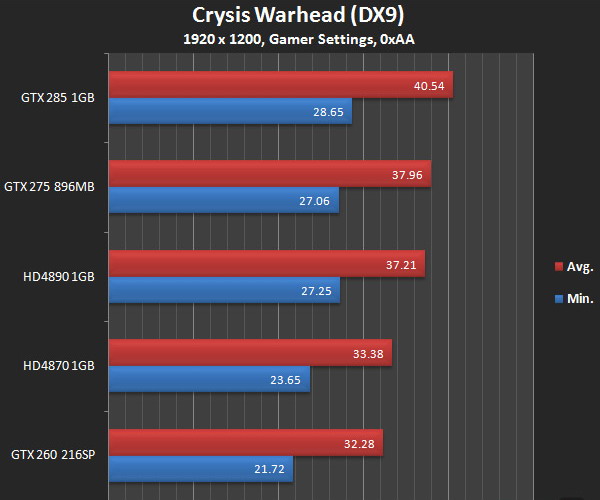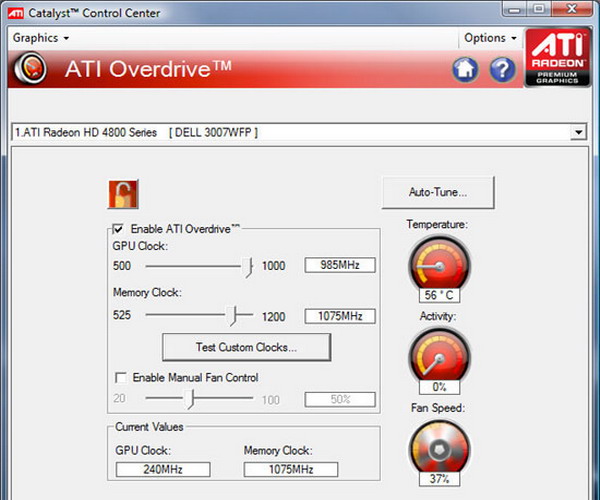
Sapphire Radeon HD 4890 1GB OC
Hardware 0 CommentsIntroduction
Alright. Time for a refresh, it’s almost spring, and that’s the season for growing video cards. The HD 4890 is, for all intensive porpoises, a retooled HD 4870, which, in my humble opinion, is overdue. Not that the 4870 was by any means a bad card, and it certainly got its deserved amount of press, but it had its failings and, when prices were even, I’d generally recommend a GTX 260.
Prices rarely were even, fortunately or unfortunately, depending on who you like to root for. But on the pretty good chance that you were getting a 4870 because it was cheaper, it was easy to overlook its major shortcomings. It wasn’t a quiet card, not that many of its class are, but more to the point it even idled power-hungry, and, particularly with the 512MB versions, didn’t like to antialias much.
Then the one gigabyte refresh came along and made it a little more competitive, right about when NVIDIA started selling the better 216-processor GTX 260. Once again, it came down to price.
AMD doesn’t like losing on the price front, that’s for damn sure. But it never hurts to have a great high-end card, either. Look, this card still isn’t a match for the ridongulous GTX 285 or the limited 295, but it’s an outstanding improvement over the HD 4870. Enough to upgrade?
The Card & Bundle
OK, FedEx box, check. Bubble wrap, check. Uh, FedEx–wait, we went over this. I got a sample card, so no goodies.
There are substantive improvements over the HD 4870 with this design. It seems that the stickers are a lot more minimalistic, with a nearly fully-clothed shootist crossing her massive pistols on this product. But if you look closely, the heatsink beneath the sticker has been modified, with three heatpipes over the previous two. One fat one in the middle and two regular ones.
The card is powered by dual 6-pin auxiliary power connectors, which should allay some fears about its power consumption, although 225W is still a high ceiling. Top it off with its requisite twin CrossFire connectors, and it’s looking a whole lot like an ATI HD 4000-series video card.
And it seems that most of the samples going out are factory overclocked, cool, so this card gets a 50MHz bump over the default GPU clocks.
Specifications and Setup
In this review, we’ll be comparing the Sapphire Radeon HD 4890 1GB OC to:
- A Sapphire Radeon HD 4850 512MB Toxic
- A Diamond Radeon HD 4870 1GB
- An EVGA GeForce GTX 260 896MB FTW
- A ZOTAC GeForce GTX 285 1GB AMP
- And a VisionTek Radeon HD 4870 X2 .
Test Computer Specifications
- Intel Core 2 Duo E8400 3GHz
- Asus Rampage Formula
- Crucial Ballistix Tracer DDR2 800 @ 4-4-4-12 (Sponsored by Crucial)
- Thermaltake Toughpower 1000 (Sponsored by Thermaltake)
- Windows Vista Ultimate x64 (Sponsored by Microsoft)
Video Card Specifications
If anyone actually reads this know that for a while, Sapphire didn’t have their product page up and I was staring at a PDF swearing at ATI for making me copy this crap by hand. But one lucky refresh later and it’s like I found a magic box with an hour inside.
Relentlessly Pursuing Performance
Tear through the latest games with seamless frame rates and go beyond HD1 with the power of the ATI Radeon(TM) HD 4890 graphics processing unit (GPU). Building on the strength of the ATI Radeon(TM) 4800 series award-winning architecture, this GPU stands out from the rest with massive graphics processing muscle. Take ultimate control over your game and crank it up with scalable performance. Go ahead, max out the settings and put the ATI Radeon HD 4890 through its paces.
- HD capable monitor required.
- AMD’s product warranty does not cover damages caused by overclocking, even when overclocking is enabled via AMD software.
- ATI CrossFireX(TM) technology requires an ATI CrossFireX Ready motherboard, an ATI CrossFireX(TM) Bridge Interconnect and may require a specialized power supply.
- 1 GB of GDDR5 memory
- DirectX(R) 10.1 support
- 800 stream processing units
- 24x custom filter anti-aliasing (CFAA) and high performance anisotropic filtering
- Quad mode ATI CrossFireX(TM) multi-GPU support for highly scalable performance
- PCI Express(R) 2.0 support
- Dynamic geometry acceleration
- Game physics processing capability
- ATI Avivo(TM) HD video and display technology & ATI Stream technology
- Dynamic power management with ATI PowerPlay(TM) technology
- I/O Output: Dual DL-DVI-I+HDTV
- Core Clock: 900 MHz
- Memory Clock: 975 MHz, 3.6Gbps
- PCI Express 2.0 x16 bus interface
- 1024MB /256bit GDDR5 memory interface
- Dual Slot Active Cooler
- HDMI compliant via dongle
- 7.1 Audio Channel Support
- Microsoft(R) DirectX(R) 10.1 support
- Shader Model 4.1 support
DirectX 10 Titles
Performance Notes
These are not marginal gains. There are times when the card doesn’t absolutely cream the 1GB HD 4870 but at other times this HD 4890 keeps up with the best of X2s and GTXs. It’s also plain that a good chunk of this redesign has been in improving the antialiasing performance, something of a bear for its predecessor.
DX9, OpenGL, and Synthetics
Performance Notes
Once again, a top-notch performance, even beating out an HD 4870 X2 in cases. Synthetics don’t give this card too much respect, particularly in the video playback field, which makes no sense to me. When testing this card later, it had no such problems, just limp scores.
Video, Power, and Overclocking
Power consumption is a bit mixed. Sure, it idles a lot lower, and that’s not only expected but really required. 4870s were competing for most wasteful, so it’s great to see that the 4890 does considerably better there. But under a full load, things go up a bit. I don’t know how some websites are metering this card out to 250W, that’s plainly more than this card can draw, but it does close in on 150W wide open. So it idles about ten watts lower than its older sib, but loads almost 20W more.
Noise and temps don’t seem too different from any other cards in this class. That is to say, in a cramped case or under even a moderate load, you’ll hear this 4890. And it can pick up–this is unfortunate in that it’s not an across-the-board improvement, but it’s also something the enthusiast has gotten somewhat adjusted to (I hope–otherwise, best of luck holding out until some 4890s with non-stock fans hit the market).
Like all HD 4000s, this card runs on the hot side. This hasn’t been a problem before and isn’t now, either. This card was fine with a slightly greater than ten percent overclock, evenly split between the GPU and memory.
Conclusion
I would consider getting this card for any mainstream gaming machine. It’s priced in a good spot, it’s a very even-keeled performer, and with regards to the 4870, the 4890 is in almost every way improved. And what I was really looking for was better antialiasing and it certainly wins there.
For the upgraders out there who already have an HD 4800 card, things may very well become a bit more complicated. It’s certainly going to provide better gaming, and by no small margin, but it’s not like it’s going to do anything beyond that. Feature-wise, it’s right there with all the other HDs.
Because this card’s an OEM-style sample, without a bundle, I’m not going to project on pricing too much or anything, especially with the immediate GTX 275 competition, but I will say that AMD and ATI set out to make a better 4870, and this card is. The only real question for someone in the market is whether or not to go factory-overclocked. As if there’s a huge amount of doubt.

